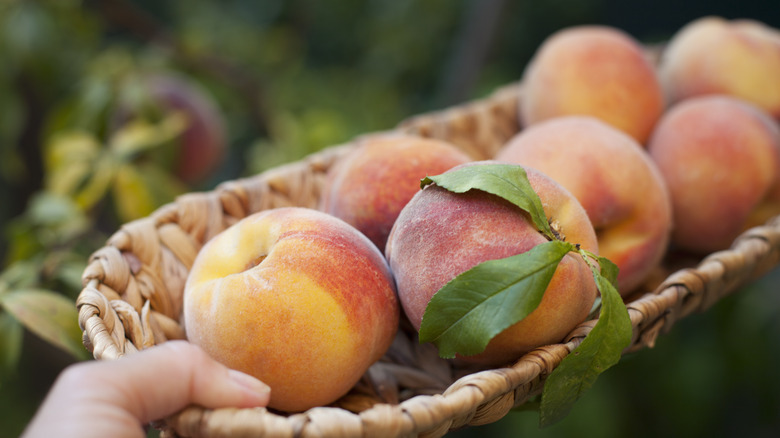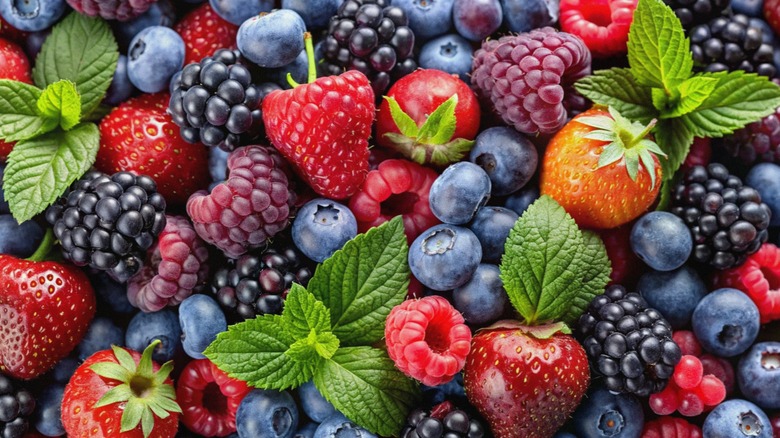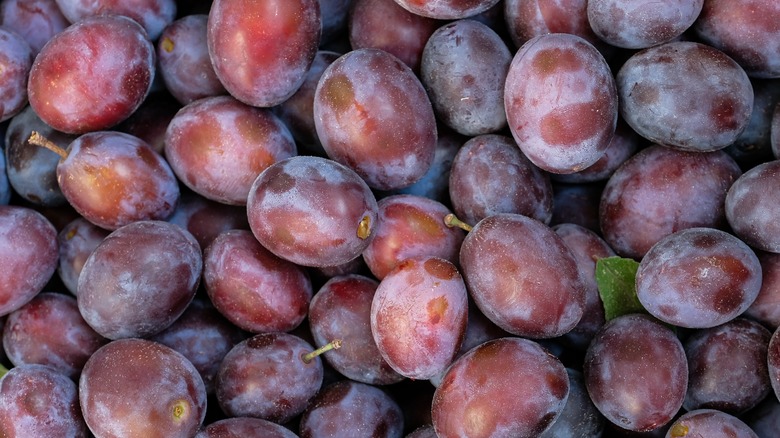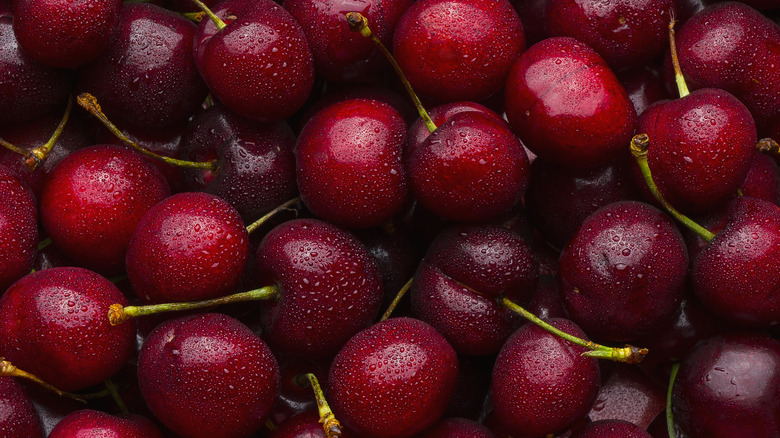Why Stone Fruits Should Be Stored At Room Temperature, But Berries Shouldn't
What should be stored in the refrigerator versus what can live on the kitchen counter can be a bit of a mystery at times. Some rules feel arbitrary and it's complicated by the fact that the recommendations are different from country to country in some cases. When it comes to fruit, sometimes it is down to preference: Do you like your apples room temperature or chilled and crisp? But when we talk about stone fruits and berries, there are some more concrete guidelines you should be considering.
Stone fruit is a fairly wide category that includes any fruit with a hard pit in the middle: peaches, nectarines, plums, cherries, to name a few. While we often want to put things in the fridge to keep them fresh, keeping stone fruits cool can actually make them worse. At temperatures below 50 degrees Fahrenheit, stone fruits can suffer from chilling injury, according to a study in the Postharvest Biology and Technology journal. This causes the fruit to dry out rather than being deliciously juicy and turns the flesh mealy and brown in spots. The cold temperature also stops the ripening process. So, if you bought an underripe peach and left it in the fridge, it would stay resolutely unripe and degrade in quality. When left on the counter, stone fruits don't suffer from chill damage and are able to ripen and develop the juices and aromas that you love them for. However, berries, which hold up better to cold temperatures, are a different story.
Why berries need to be refrigerated
Berries, in contrast, need to be stored in the fridge. Berries aren't susceptible to chill damage from the temperatures in your refrigerator, so there's no particular risk that comes from putting them in the fridge rather than leaving them on the counter. Additionally, berries are usually sold fully ripe, so there is no need to try to get that last bit of ripening by leaving them out. It won't be delicious new juices that will develop because of the warmth of the room, but something that spoils your precious berries, so it's best to refrigerate them.
That being said, there are some precautions to take when preventing fresh berries from molding by storing them in the fridge. If you're purchasing a large container of berries, the chances that there won't be any that are bruised or a little past their prime are sadly low. Before you put the tub in the fridge, go through the berries and remove any bruised fruits, then eat or discard them promptly. Doing so will prevent any nasty surprises when reaching in for a handful later and stop bacteria and mold spreading from one bad berry to the rest of the bunch. Finally, don't rinse your berries before you put them in the fridge, only wash them shortly before you plan to eat them. Otherwise, you risk trapping additional moisture in with the berries, which can speed along the process of them going bad.
How to save stone fruits from going bad
So, what do you do if you have a stone fruit that is ripe, but you're not quite ready to eat it yet? Like so many rules, the one around putting stone fruit in the fridge can be bent a little bit in this case. Chill injury isn't only related to storage temperature, but also how long the stone fruit is kept at that temperature. If your fruit is already ripe, you can risk putting it in the fridge for a short stint, as long as it's not more than a day or two.
The other option is a little more drastic: You can freeze your ripe stone fruit. You won't have a fresh fruit anymore, but it's better than letting it go bad or mealy and losing it entirely. The mealiness caused by chill injury only takes effect when it is stored between 36 and 50 degrees Fahrenheit, so your fruit will not fall victim to it when frozen. However, once thawed, it's going to be best for cooking and baking.
Choosing stone fruits that aren't affected by chill injury
The big problem with stone fruits that have been affected by chill injury is that you can't always tell by looking at them. In the grocery store, they might just seem underripe until you get home and bite into them. Sometimes, when grocery shopping for produce, you'll find great fruit at your local store and other times it will be deceptively bad, and this often comes down to the issues around chill damage.
Much of the fruit that we eat, we eat out of season. If you are enjoying a peach outside of its normal growing season, there is a good chance that it has been shipped in from somewhere else. Because of the relatively short shelf life of stone fruit, that means that the people transporting the produce have to do something to stop it from going bad before it gets to you. They do that with refrigeration. It's all very well not putting your stone fruit in the fridge, but if it arrived at your grocery store in a refrigerated truck then the damage may already be done. For the best flavor and texture, be sure to check the natural growing season of stone fruits in your area and buy local when possible.



